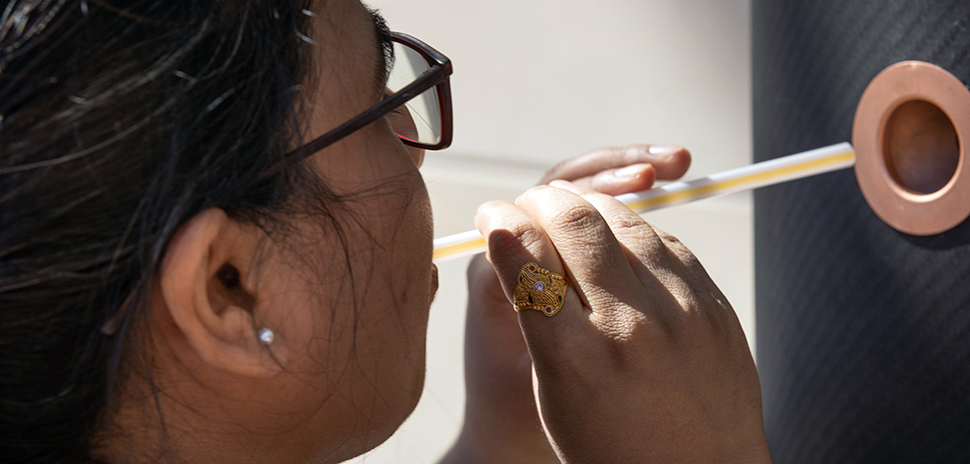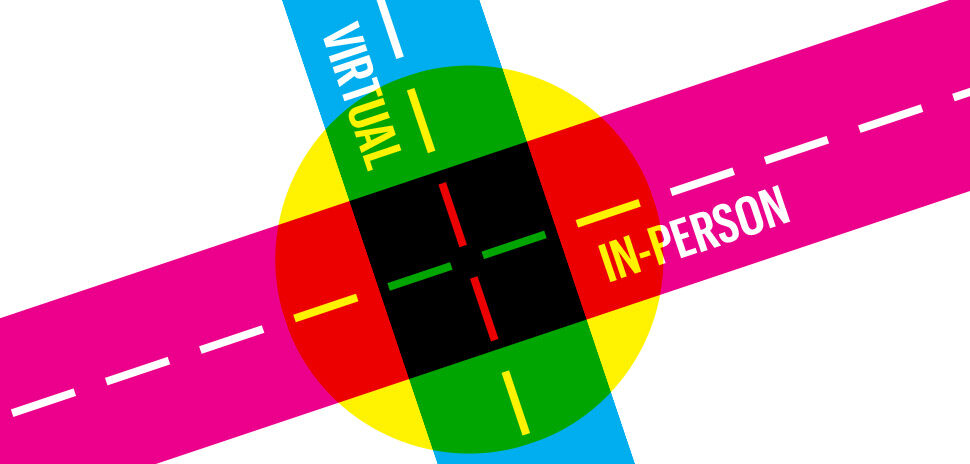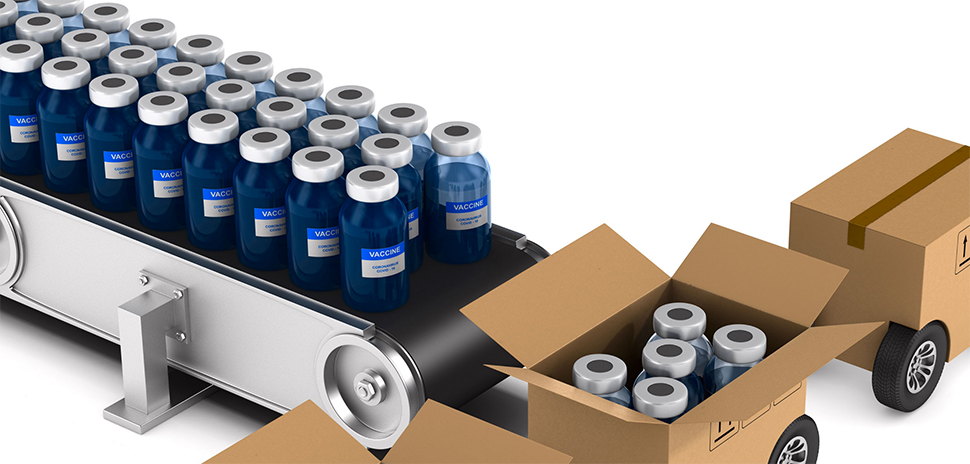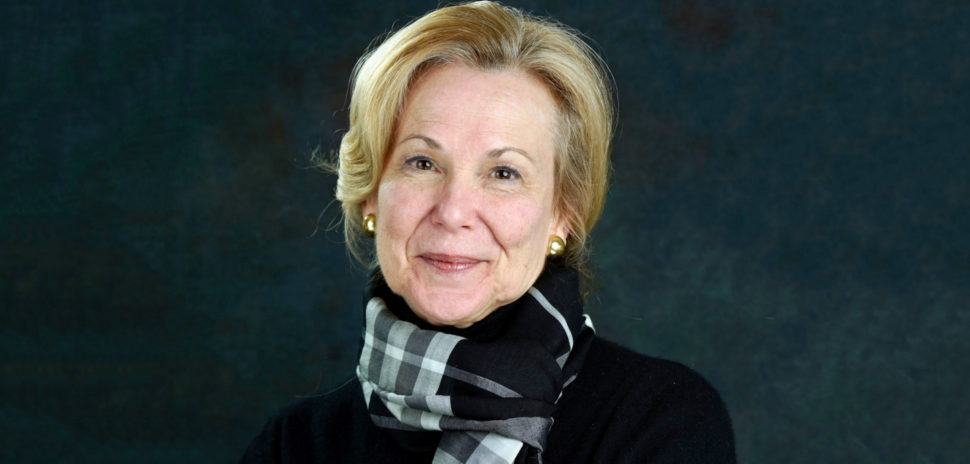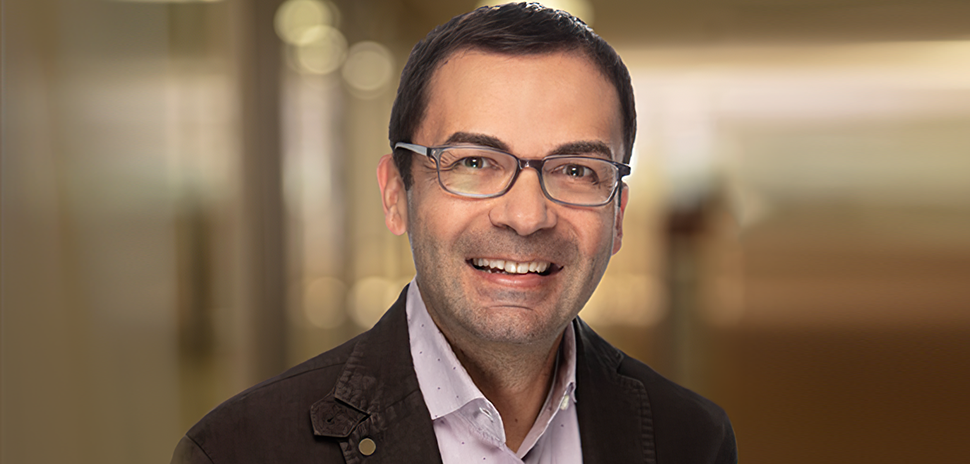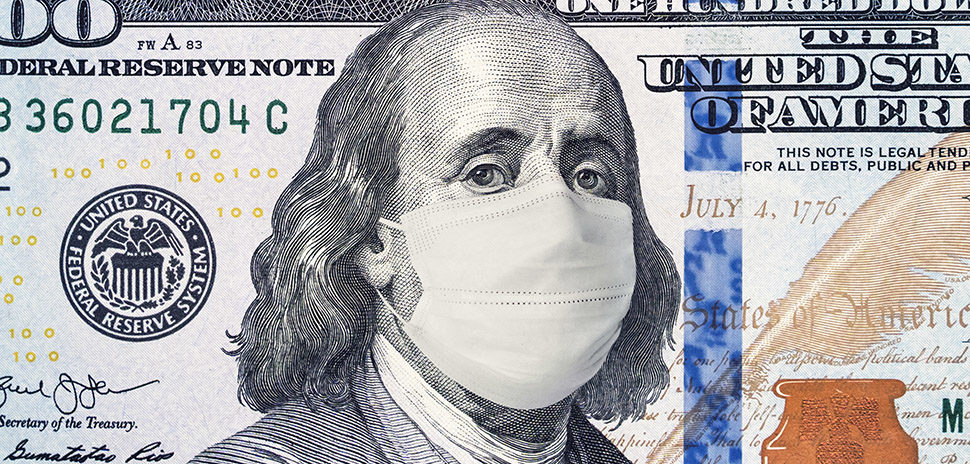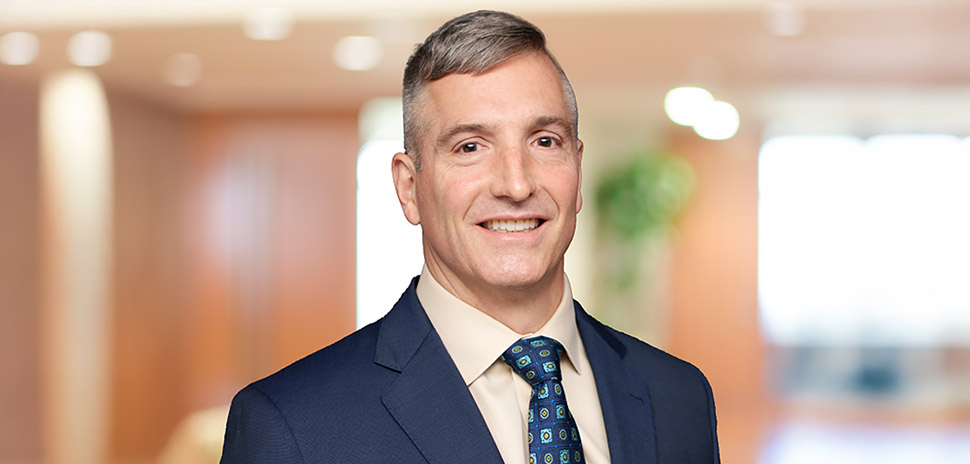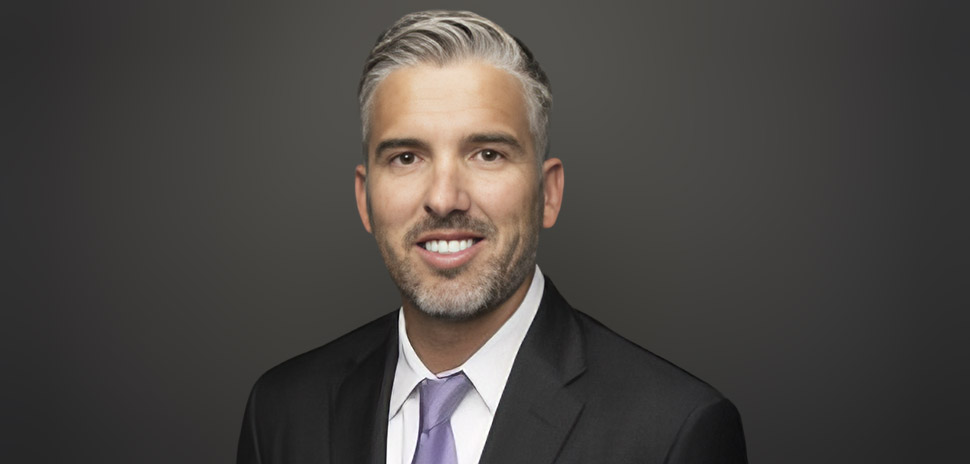A new device may revolutionize COVID-19 screening with breathtaking speed—providing nearly instant results after you blow through a straw.
The sophisticated breathalyzer, called Worlds Protect, is being developed and tested by Dallas-based Worlds Inc., the U.S. Air Force, and The Texas A&M University System.
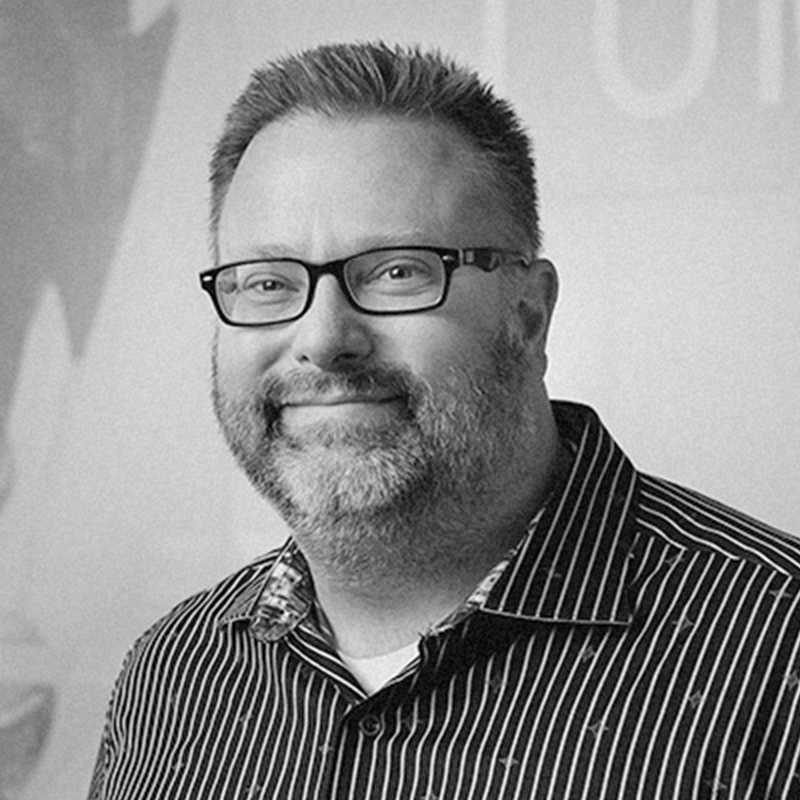
Chris Rhode, president of Worlds Inc.
“People can walk up and, literally, just breathe into the device,” said Chris Rohde, president of Worlds Inc., in today’s announcement from his collaborator, the Texas A&M University System. “It’s completely noninvasive. There’s no amount of touching. And you quickly get a result. You get a yay or nay.”
To be screened, a person walks up to the touchless, barrel-like device, which automatically adjusts its height, thanks to Dallas-based standing desk maker Vari. The person blows through a straw into a copper inlet, and gets results back in less than a minute. Sensors in the device use advanced mass spectrometry to identify volatile organic compounds in breath that are found only in people infected by COVID-19—not those without it.
The device detects the VOCs that are a body’s reaction to COVID. “That’s what makes us unique,” Copps said. “It also means the device itself won’t be limited to just COVID.”
Yesterday Rohde and his co-founder, CEO Dave Copps, spoke with Dallas Innovates while driving from Utah to Dallas as they towed a prototype behind them.
The hands-on cofounders oversaw more than 800 tests of the device in Utah, Copps told Dallas Innovates. “Today, PCR (nasal and saliva swab) testing is the gold standard, although it’s not perfect and can take up to four days to provide results. I can tell you that we already compare very favorably to PCR. And because our device is AI based, we’re improving literally every day. We’re very excited.”
Worlds Protect uses its artificial intelligence (AI) along with a high-tech sensor developed at University of North Texas to detect whether people require COVID-19 testing. Worlds Inc. is seeking FDA emergency-use authorization to use the device as a COVID screening tool, aiming for eventual approval as an alternative to PCR tests. Ultimately, its creators envision, the device may be a one-breath screener for other diseases, future pandemic pathogens—even cancers.
But its focus today is on COVID, Rohde says, so people can get back to work, restaurants, places of worship, sports stadiums, malls—back to life.
New testing begins today at Texas A&M
Today, a prototype will begin screening Texas A&M students on their campus at College Station, the university system announced. The same students will get PCR tests. Results of both tests will be compared to confirm the accuracy of Worlds Protect and to help refine its AI.
![Jason Fox, head of spatial computing at Worlds Inc. (in blue), joins Dr. David Staack, associate professor of mechanical engineering at Texas A&M, and other researchers at Texas A&M to demonstrate the COVID-19 breath screening device. Staack has partnered with Worlds Inc. on the development of the breath-capture system for the device. [Photo: The Texas A&M University System]](https://s24806.pcdn.co/wp-content/uploads/2020/11/Worlds-Proect-4-.jpg)
Jason Fox, head of spatial computing at Worlds Inc. (in blue), joins Dr. David Staack, associate professor of mechanical engineering at Texas A&M, and other researchers at Texas A&M to demonstrate the COVID-19 breath screening device. Staack has partnered with Worlds Inc. on the development of the breath-capture system for the device. [Photo: The Texas A&M University System]
Further testing will begin soon at Lackland Air Force Base in San Antonio. Col. Charles Bris-Bois, leader of the Pentagon’s Air Force Disruptive Technology Team, will coordinate Worlds Protect screening at Lackland, the Texas A&M System announced today. The devices could help screen up to 900 enlistees weekly who arrive for basic training.
Col. Bris-Bois also helped arrange the device’s initial testing in Ohio and screening now underway at Brigham Young University in Utah, the A&M System said.
“Our goal is to do thousands more tests between now and sometime in the first quarter of 2021,” Copps said. “We’d like to be ready to go to market by late first quarter.
How It All Began: A Canceled Rodeo and a “What if?” Moment
Copps calls it their “9/11 moment, when you remember where you were when it happened.”
Copps and Rohde were in Houston, working with Chevron on a sensor that detects chemical leaks. As they ate lunch on a bar patio, they watched news reports about the COVID-19 pandemic. “Houston had just canceled its rodeo, so it was a big deal,” Copps recalled. “As we drove home, we asked ourselves, ‘We’ve created a sensor that can detect parts per trillion—what if it could actually detect COVID, the way a cancer-sniffing dog detects cancer?'”

Dave Copps, CEO of Worlds Inc.
Back in Dallas, they talked with Dr. Guido Verbeck of the University of North Texas, who had developed the chemical leak sensor for Chevron. Dr. Verbeck’s Level Three biological sciences lab soon acquired 20 positive and 20 negative COVID-19 samples from a national lab. Dr. Verbeck—one of America’s foremost authorities on chemical sensing—conducted paper spray tests where positive and negative samples were smeared on pieces of paper with air used to simulate breath.
“It was fascinating—we saw so many markers,” Copps said. “We saw four unique biomarkers for positive COVID samples that didn’t occur with the negative samples. Dr. Verbeck said he’d never seen a signature that was so strong.”
It was “go” time. “Chris and I have created three companies together,” Copps added. “We love to say we have this idea, we know some great partners, let’s just start running.”
So they assembled a team and hit the gas.
“We’re software guys, not medical people. So we aligned ourselves to some great people in that area to help us out.”
Copps and Rohde began working closely with Texas A&M’s SecureAmerica Institute on their device’s development.
“Our original device was built by one of our engineers,” Rohde said. “Version Two is being built by Texas A&M. They’re currently working on Version Three, which should be out in the next few weeks. We’re going from a lab prototype to a device that’s manufacturing-ready. That’s part of what Texas A&M is providing—the ability to do small-batch manufacturing. They’ll produce the initial thousand units.”
![Dr. Guido Verbeck developed the device’s key technology. The UNT chemistry professor, who is a doctoral graduate of Texas A&M, has worked with Worlds Inc. software engineers since March. [Photo: UNT]](https://s24806.pcdn.co/wp-content/uploads/2020/11/Dr-Guido-Verbeck-UNT-professor.jpg)
Dr. Guido Verbeck developed the device’s key technology. The UNT chemistry professor, who is a doctoral graduate of Texas A&M, has worked with Worlds Inc. software engineers since March. [Photo: UNT]
The Texas A&M System has invested $1 million in the project’s development. The university will assist Worlds Inc. from engineering to the mapping of a commercial manufacturing process. In total, five prototypes will be tried out this fall on the A&M campus.
Rob Gorham, executive director of SecureAmerica, said the Texas A&M System specializes in helping businesses like Worlds Inc. get through the so-called “valley of death” between an invention and commercial viability, the system said in a release.
“There’s a lot of work that has to happen,” Gorham said. “You have to think about standards. You have to actually be able to rapidly and with agility circulate your design as well as think through all of the different supply-chain requirements.”
“We’re a perfect example of what they’re trying to do,” Copps said of SecureAmerica. “We’re a company that has no experience in manufacturing. And they’re going to take us from an idea to a device that’s ready for larger production. Over time, we’ll refine the device, until we can turn it over to a large batch manufacturer and make a lot of these things. Having that process being managed by A&M has been an incredible resource for us.”
Another resource they needed? Funding. After emerging from stealth early this year, Worlds Inc. raised a Series A $10 million round led by Austin’s Align Capital and included Chevron Technology Ventures, Piva, and Hypergiant Industries.
“We’re going to experience some pretty crazy growth,” Copps said. “So we may raise a little bit more money in the coming year.”
Getting people back to work and real life
As their devices roll out for public use in 2021, Copps and Rohde envision them outside office buildings, factories, schools, military bases—anywhere people need to be screened for COVID and other infectious diseases. The World Inc. team includes Pete Holland, scientific advisor for the NFL Players Association. They’re working with UT Southwestern and other hospitals, and expanding additional testing through the Pentagon.
Initially, the co-founders estimate that the device will be leased at just under $5,000 a month. The estimate the cost per test to be about 50 cents.
“Our goal is nothing less than to create the fastest, most accurate, and least expensive test for COVID-19 available today,” Copps said.
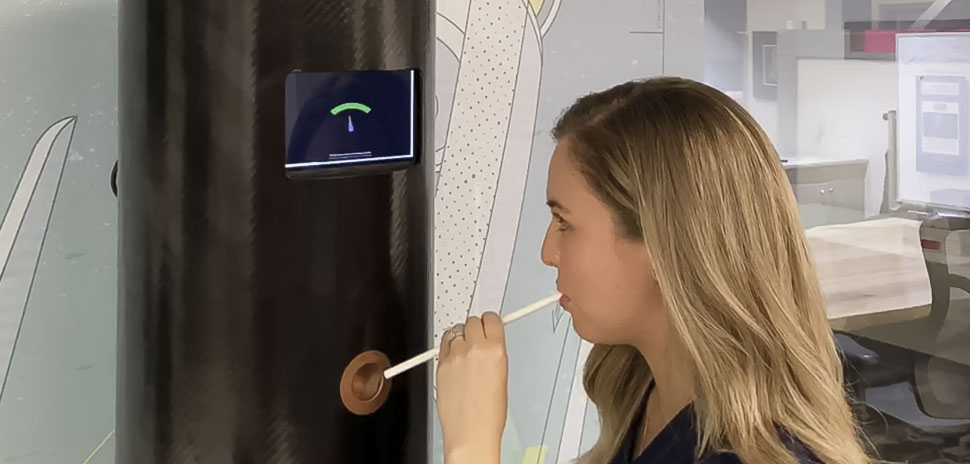
Inside the Worlds Protect kiosk, a person’s breath is examined for the specific volatile organic compounds that are generated by the body when someone is fighting the virus. Worlds Inc. uses AI software to map the chemical code of a body reacting to the infection. [Image: Worlds Protect video screenshot]
“Once we get screen device authorization, the floodgates open, he said. “We have interest from large organizations, large airlines, large cruise lines, large government organizations. And the Air Force, of course, is doing this, and they represent the whole DoD.”
All the while, the devices’ AI will continue learning.
“We’ll learn more and more from every breath,” Copps said. “Every device is networked and connected. As results come in, they can be collected and analyzed in one place to contribute to the overall learning about COVID. We can take that data and send it back down to the devices for a continuously learning health network.”
Even if COVID-19 vaccines are successful, the two co-founders believe the devices will be here to stay.
“I don’t think we’ll ever go back to a pre-COVID normal,” Copps said. “If someone has an infectious disease, they should not be around other people. One of the new norms is going to be before you get on a plane, you see if you’re sick or not. Before you walk into a sports event or a hospital, you’ll be screened. This will never go away. It’s going to create a new normal.”
That’s where the device can be a gamechanger. “We were talking to one of the airports in Texas, Copps said. “They told us that one day we’ll look at letting sick people on a plane in the same way we now look at putting letting people who smoked on a plane.”
If their Worlds Protect device becomes widely used, one thing that may change is what people call it. “In Utah, they called it Lola, I’m not sure why,” said Rohde. “The Air Force calls it NIRDS, for Non-Invasive Rapid Detection System.”
So, could “NIRDS” be something that helps America break out of lockdowns and get back to normal life? Perhaps. But one thing’s for sure: as Copps and Rohde drove their prototype down the highway yesterday, they sure seemed to be on the road to success.
![]()
Get on the list.
Dallas Innovates, every day.
Sign up to keep your eye on what’s new and next in Dallas-Fort Worth, every day.

